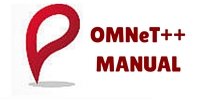Long-Term Evolution Advanced (LTE-A) will rely on the concept of “small cell”, i.e. low-power and low-cost radio base station, whose target is to provide broadband and energy-efficient coverage in residential sites and hot spot outdoor environment. Small cells will be characterized by some peculiar features that will make easier the coordination among base stations in order to improve link capacity. In this paper, we will assess the link level performance of a cooperative multi-point transmission scheme for LTE-A small-cell uplink. The mobile terminal transmits the uplink signal to a virtual networked MIMO consisting of different Evolved Node Bs (eNBs) jointly processing the signal. Coorperation is applied at eNB level in order to improve system diversity without increasing terminal complexity.
Bit-Error-Rate (BER) performance of the simulated networked MIMO system will be first appreciated, assuming error-free and delay-free backhauling. In the perspective of considering realistic simulation scenarios, we shall analyze the impact of channel estimation and channel coding, as per 3GPP standard, on link performance. The link energy efficiency will be also analyzed in terms of useful energy spent by the mobile terminal for correct transmission of information. Selected simulation results will show the dramatic improvement both in terms of BERperformance and reduced energy consumption, obtained by cooperative transmission techniques for the LTE-A uplink. Imperfect channel estimation represents a critical issue, able at significantly impairing eNBs coordination even when robust channel coding is adopted.
